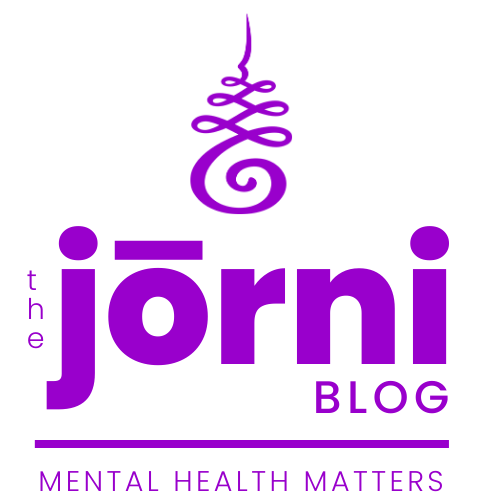Eye Movement Desensitization and Reprocessing
What the heck is EMDR?
Yes, Eye Movement Desensitization and Reprocessing is quite a mouthful, so we will refer to it as EMDR in this post. That is a little easier. And I have to admit that before speaking with the Dope Trauma Therapist, Natalie Milom, on the podcast, I had never heard of EMDR before. I was also unaware that it could be used to process trauma and I was curious to find out more.
Now, before we dive into EMDR, let’s talk about trauma first. Natalie gave us a great explanation on the podcast, so here are her thoughts on trauma. Trauma is the emotional reaction to an extremely disturbing experience or a traumatic event that exceeds a person's normal ability to cope, leaving them feeling terrified and helpless.
They are easy to learn and have wonderful benefits for your physical and mental health.
Deeply distressing events that may result in trauma can involve violence or abuse, sexual assault, and torture. Also, a loved one's death can be traumatic, especially if it is violent. You could also experience trauma if you lived through or saw a terrorist attack, war, a natural disaster, or a car accident.
“Trauma creates change you don’t choose. Healing is about creating change you do choose.”
- Michelle Rosenthal
However, we frequently use the term "trauma" in contexts beyond PTSD, referring to interpersonal traumas, crisis reactions, and other profoundly distressing situations that impact one's mental health and overall wellbeing.
Trauma and PTSD
The American Psychiatric Association (APA) says that one in eleven people who have been through or witnessed a traumatic event may get post-traumatic stress disorder (PTSD) at some point.
I believe that traumatic events have such profound effects because they push us beyond our boundaries, deeply affecting our wellbeing. Some people may heal from such an event and never get PTSD. But some people may continue to have trauma symptoms for a long time after a traumatic event.

If you do some research on trauma signs and symptoms, you will learn that some of the most common PTSD reactions include re-experiencing the trauma through flashbacks and nightmares, problems sleeping, depression, anxiety, and panic attacks. You may also struggle with irritability, sudden mood swings, difficulty concentrating, and impulsive or self-destructive behavior.
But you may have some less obvious signs of PTSD, like aches and pains, eating disorders, and feeling alone and isolated.
different types of trauma
Trauma can be roughly divided into three types, which The Trauma Practice explains on their website.
Acute or single trauma
Acute trauma is caused by an isolated, extraordinarily stressful, or dangerous event. Some examples of acute trauma include a sexual or physical assault, the sudden death of a loved one, a terrorist attack, or a natural disaster.
Chronic trauma
Chronic trauma, also known as repeated trauma, involves continuous or repetitive exposure to traumatic conditions. This could include domestic abuse, war, neglect, or deprivation.
Complex trauma
Complex or permanent trauma happens when a person is exposed to several lasting traumatic experiences. Ongoing physical, emotional, or sexual abuse, being held captive and tortured, being the victim of human trafficking, would all fall under this type of trauma.
EMDR and Trauma Recovery
Understanding and processing trauma-related emotions are crucial for trauma healing. Therefore, the main goal of Eye Movement Desensitization and Reprocessing (EMDR) is to help people who have been hurt by trauma to separate from and heal through their emotional pain (and often the accompanying physical symptoms).
What is EMDR?
Eye Movement Desensitization and Reprocessing is a psychotherapy modality that uses two-sided stimulation to help people with PTSD and other mental health problems heal through their emotional pain. This therapeutic method is based on several psychotherapy theories, including cognitive-behavioral therapy (CBT).

Qualified therapists are using EMDR to treat PTSD, panic disorder, and other mental health issues. These could include depression, anxiety, phobias, grief, addiction, ADHD, chronic pain and much more. The application is so versatile and therapists, like Natalie, have seen great success with their patients. EMDR is also a very gentle and non-invasive way to approach trauma healing.
During your EMDR sessions, you will be asked to concentrate on the disturbing thoughts and feelings resulting from a traumatic experience rather than on the event itself. The primary purpose is to help you see troubling experiences in a less upsetting way. This is important because it means you do not have to “relive” your trauma and re-experience it.
Where did EMDR come from?
Francine Shapiro, an American psychologist, came up with EMDR in 1987 after she found that moving her eyes from side to side helped her deal with bad thoughts, painful memories, and the emotional pain they caused.

Francine Shapiro's Adaptive Information Processing (AIP) model suggests that unprocessed stressful and traumatic events may increase vulnerability to future stressful situations and reduce coping capacities. Trauma-related problems may persist as a result of this.
EMDR therapy today is an empirically-supported trauma treatment. While researching this topic, I noticed that studies had proven EMDR helpful in treating trauma. According to four independent studies, after three 90-minute EMDR sessions, 84 to 100% of single-trauma victims no longer experienced PTSD symptoms.
How EMDR works
According to researchers, EMDR can reorganize your brain to allow it to function normally by changing how memories are stored. The theory behind eye movement desensitization and reprocessing is that painful memories can modify the brain. So, the healing process of EMDR focuses on the upsetting thoughts and feelings that come up after a traumatic event. This is why Natalie talked about trauma physically changing our brain.
Apparently, from what I understand, EMDR therapy can reset your brain by simulating the REM (rapid eye movement) stage of sleep, through which the brain typically processes information. In addition, research shows that EMDR can help rebuild the connections between neurons in your brain, allowing it to work in a more normal way again.
When you blink quickly while recalling a traumatic event, your brain absorbs the trauma. In this way, EMDR helps reduce trauma-related distress and starts the process of healing your trauma.
The Takeaway
Trauma represents a disturbing event that overwhelms our coping ability. If you have experienced and survived trauma, please know that you are not alone. Often, it is difficult to express what happened and so many trauma survivors struggle alone.
Your traumatic experience could lead to posttraumatic stress disorder, disrupt your everyday life and impair your health, work, and relationships. If you experience PTSD, you may find it difficult to enjoy daily activities, to feel good about yourself, to have meaningful relationships, or to find meaning in life.

Speaking with Natalie about the effectiveness of EMDR, I feel this approach to healing trauma could be profound. It could help integrate distressing experiences into current life context, ease emotional and physical distress, and allow the feeling of balance and trust in yourself.
By the end of your EMDR treatment, you should be able to recall traumatic experiences without feeling overwhelmed.
There should be a sense of healing concerning the emotions involved. Eye movement desensitization and reprocessing can also help you sleep better and increase your concentration and focus.
And since EMDR therapy could take place online, it could provide an amazing coping strategy and improve your overall wellbeing from the comfort of your own home.
Sources
https://www.camh.ca/en/health-info/mental-illness-and-addiction-index/trauma
https://www.emdr.com/history-of-emdr/
https://www.sciencedirect.com/science/article/abs/pii/S0887618598000383
https://www.ncbi.nlm.nih.gov/pmc/articles/PMC3951033/
https://www.medicinenet.com/what_are_the_3_types_of_trauma/article.htm
https://traumapractice.co.uk/types-of-trauma/
https://thejornipodcast.com/episode-9-eye-movement-desensitization-and-reprocessing-with-natalie-milom
